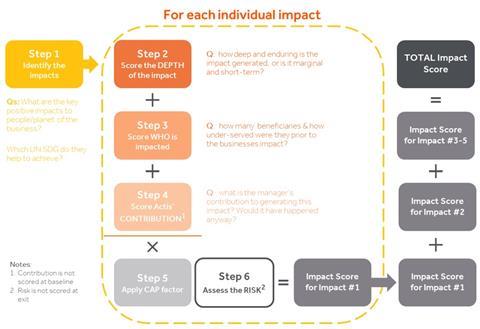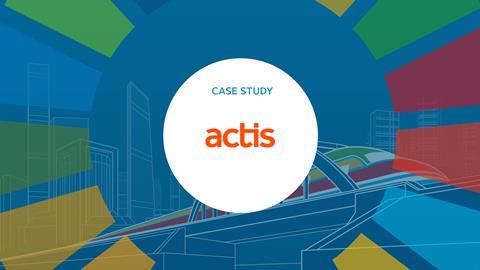Signatory type: Asset owner/Investment manager
Operating region: Africa, Asia, Latin America
Assets under management: US$12bn
Practice area: Engagement
Why we target the SDGs
Actis is an investor in growth markets across Africa, Asia and Latin America. We apply international ESG standards to all our investments. By also targeting the SDGs we can demonstrate the impact-focused intent of our investment decisions and present the impact of those decisions using a language understood by our existing and prospective investors, who often ask us to describe our contribution to the SDGs.
We have found that fund strategies intentionally targeting positive outcomes have a systematic alignment to one or more of the SDGs. Mapping each investment’s positive outcomes to the goals more clearly illustrates this focus and the realisation of the intended impact, demonstrating the link between strategic intent and generating positive impact.
How we target the SDGs
We identify, measure and monitor the positive social and environmental outcomes of investments using the Actis Impact Score™ (AIS), which is based on the consensus developed through the Impact Management Project, a global forum on common standards for impact measurement and management.
This scoring system is directly comparable across investments. It provides two outputs to measure the impact performance of investments:
- an impact score, measuring the positive impact of the business;
- an impact multiple, measuring the increase in positive impact during Actis’ investment period.
A member of the responsible investment team is involved in every transaction from screening onwards, working collaboratively with the investment team and due diligence advisors to target material positive impacts.
These impacts are presented to the Investment Committee, alongside the SDGs that they align with at a high level, to demonstrate the alignment of core and ancillary business operations with the goals in the fund strategy documents. This ensures that the impact intent is clear across the firm and reduces the risk of misalignment in objectives.
The AIS follows six steps:
Step 1: What?
What are the intended outcomes? We identify up to five activities associated with an enterprise or project that: (a) generate positive outcomes for people or the planet; (b) are measurable and (c) can be influenced to increase during Actis’ investment period.
Step 2: How much?
How much social or environmental impact is likely? This dimension covers the significance of the outcome being sought in terms of depth and duration. We determine whether the investment is likely to achieve deep and enduring positive change (e.g. sustainable healthcare reducing mortality rates) or something more short term, shallow or reversible.
Step 3: Who?
Who are the stakeholders that experience the positive social and environmental outcomes, in terms of the number of people benefitting and how well-served were they already? What was the relative need of the stakeholders before the investment?
Step 4: Contribution?
Did Actis’ investment contribute to achieving the outcomes? Would they have happened anyway?
Step 5: Core, ancillary or peripheral?
The scores from steps 2, 3 and 4 are added together and multiplied by a ‘CAP’ factor, depending on whether the impact (identified in step 1) is derived from a core (x5), ancillary (x3) or peripheral (x1) activity of the enterprise or project:
- 5x factor – a core business activity that directly implements the strategy to drive revenue and profit, for example, clean power generated by a renewable energy company, displacing more carbon-intensive sources;
- 3x factor – an ancillary business activity that directly supports and enables the core activity or makes a small contribution to revenue, for example, a real estate development creating employment opportunities for local people;
- 1x factor – a peripheral business activity that does not support the core activity, for example, a business making a charitable donation to support disaster relief efforts.
Step 6: Risk
We assess the risk of the investment failing to achieve its intended outcomes as low, moderate or high. This doesn’t affect the score, but it does help with investment decision making.
Calculating the Actis impact score
At the outset of any investment, Actis will forecast a certain AIS to be achieved by exit, in the same way that it forecasts a financial return. Like financial evaluations, the AIS can be measured throughout an investment to see precisely how it is performing. The current score can be compared against the score at the time of initial investment (baseline) to understand how much impact has been added. This is called the impact multiple; the greater the increase in impact, the bigger the multiple.
Figure 1. Actis impact score

Example: Renewable power generation infrastructure, India
Having identified a gap in India for clean energy generation capable of meeting the country’s rapidly growing power demand, Actis decided to create a renewable energy platform – Ostro Energy – to focus on the construction of wind power and solar energy projects.
Within four years, Ostro had signed long-term power purchase agreements reaching 1.1 gigawatts in capacity – the equivalent to powering 1 million homes – in states where 54% of power was coal-generated, thus avoiding over 1.4 million tons of carbon dioxide. When Actis exited the investment1, Ostro had 850MW of wind and solar power plants in operation.
Ostro created over 4,500 jobs for Indian workers, while promoting greater worker welfare by establishing a Labour Accommodation Standards Policy, which was aligned with international best practice and embedded into all construction contracts. There were zero worker or community strikes related to Ostro’s operations.
With Actis’ support, Ostro implemented numerous programs to improve the lives of local communities. These initiatives included establishing health camps to treat thousands of people from rural communities, and livestock veterinary healthcare facilities that served around 30,000 animals.
The company also installed solar-powered water filtration units to provide safe, clean and reliable drinking water for communities in Rajasthan, after a community needs assessment highlighted that locals were suffering from fluorosis. Over 1.5 million litres of clean drinking water were dispensed to villages near Ostro’s projects—and clean water continues to be dispensed today.
The table below shows how the project’s measurable outcomes – as calculated by the AIS – were mapped to the SDGs prior to Actis exiting in 2018. For newer investments, we are reviewing impact scores annually to give a clear indication of progress towards the initial impact forecast. If a business is underperforming, we seek to correct that. The intended impacts and business case of an investment are closely aligned, and underperformance typically spans both areas, so corrective actions are usually implemented in collaboration with the deal team, and company management.
Table 1. Mapping the SDGs against Ostro Energy













